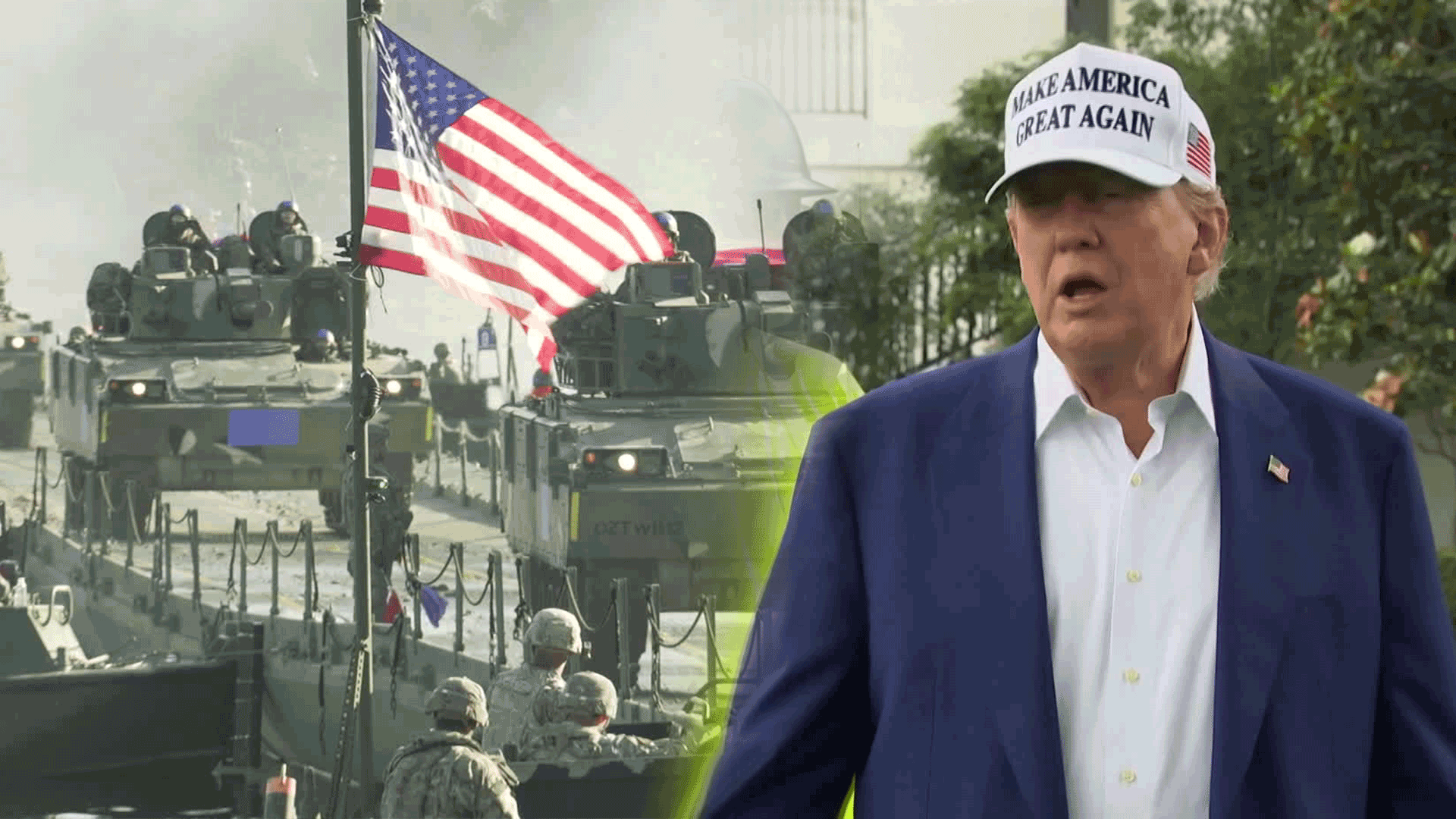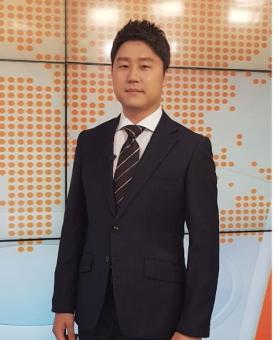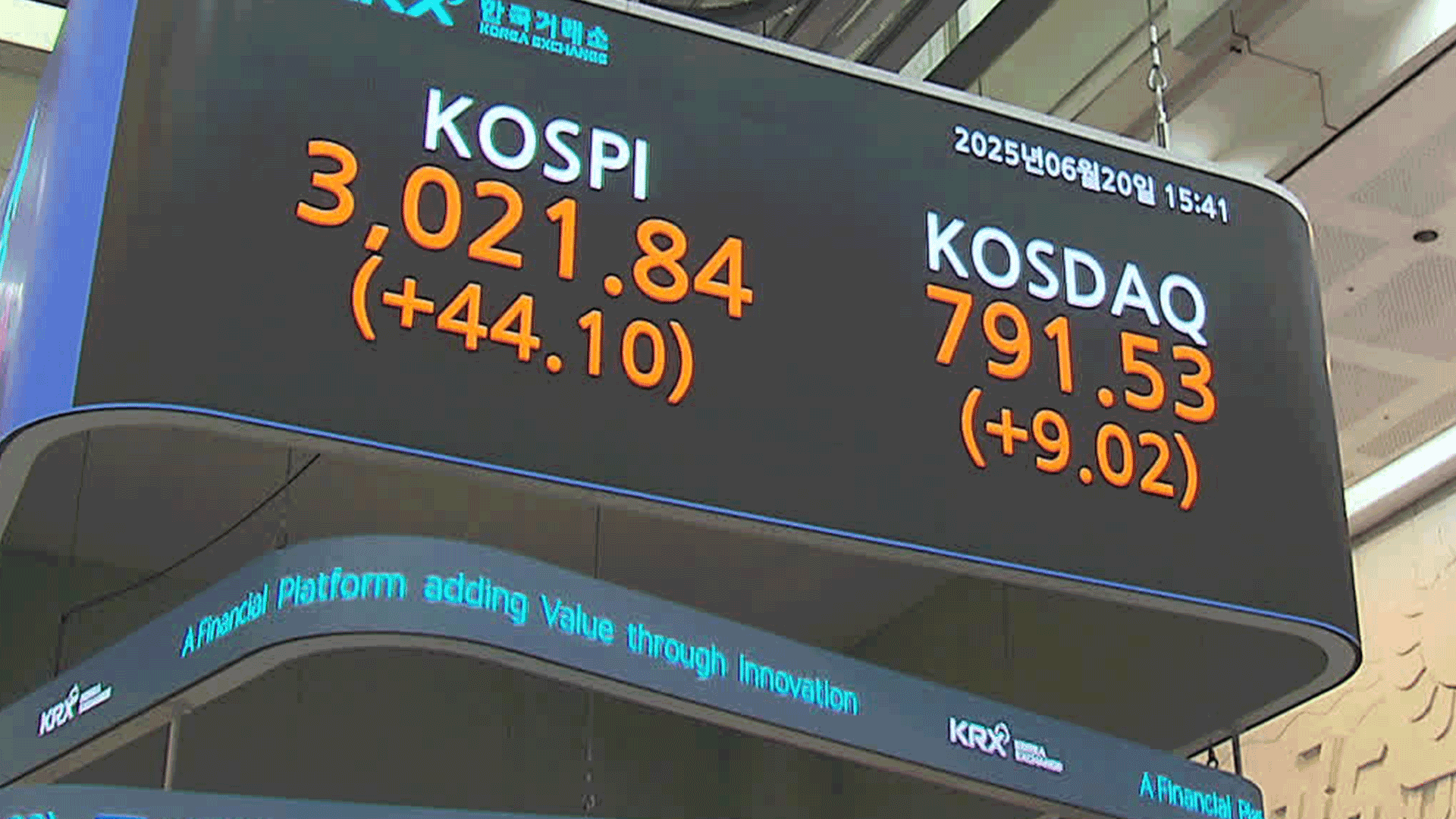Why U.S. wants 5% of GDP for defense?
입력 2025.06.21 (00:47)
읽어주기 기능은 크롬기반의
브라우저에서만 사용하실 수 있습니다.
[Anchor]
So, what is the basis for the 5% demand? This question is inevitable.
Rather than having a solid basis, it is analyzed as a negotiating tactic.
Our government has taken a stronger stance, stating that we are already spending a lot on defense compared to other countries.
Reporter Ji Hyung-cheol reports.
[Report]
In response to the U.S. proposal of a 5% standard, the Ministry of National Defense immediately stated that we are one of the countries with a very high defense spending ratio compared to GDP among major U.S. allies.
Our defense spending is about 2.3% of GDP, while Japan's is around 1.8%.
The Ministry of Foreign Affairs also issued a statement, saying it would comprehensively review domestic and international security environments and government financial requirements, emphasizing that "we will make our own decisions."
The tone of the statement from the Ministry of Foreign Affairs is evaluated as unusually strong.
Our defense budget is 61 trillion won, which means we are currently spending about 170 billion won a day, but considering welfare spending and financial conditions, it is realistically difficult to increase it to the level demanded by the U.S.
There are also limits to purchasing more weapons from the U.S.
We have significantly domesticized many high-cost weapon systems such as fighter jets and warships that we used to rely on the U.S. for, and we are even exporting them.
Even if we were to purchase all the early warning aircraft and SM-3 missiles that were mentioned, it would still cost about 9 trillion won.
Ultimately, the figure of 5% of GDP is analyzed not to accurately reflect reality, but rather as a negotiating tactic of President Trump.
[Yu Ji-hoon/Senior Researcher, Korea Institute for Defense Analyses: "It is a standard unilaterally proposed to align with Trump's transactional nature. It sets the stage to create favorable conditions for the U.S. regarding issues such as the stationing of U.S. troops in Korea or defense cost-sharing."]
President Trump may present such demands starting from the first Korea-U.S. summit after our new government is launched.
This is KBS News Ji Hyung-cheol.
So, what is the basis for the 5% demand? This question is inevitable.
Rather than having a solid basis, it is analyzed as a negotiating tactic.
Our government has taken a stronger stance, stating that we are already spending a lot on defense compared to other countries.
Reporter Ji Hyung-cheol reports.
[Report]
In response to the U.S. proposal of a 5% standard, the Ministry of National Defense immediately stated that we are one of the countries with a very high defense spending ratio compared to GDP among major U.S. allies.
Our defense spending is about 2.3% of GDP, while Japan's is around 1.8%.
The Ministry of Foreign Affairs also issued a statement, saying it would comprehensively review domestic and international security environments and government financial requirements, emphasizing that "we will make our own decisions."
The tone of the statement from the Ministry of Foreign Affairs is evaluated as unusually strong.
Our defense budget is 61 trillion won, which means we are currently spending about 170 billion won a day, but considering welfare spending and financial conditions, it is realistically difficult to increase it to the level demanded by the U.S.
There are also limits to purchasing more weapons from the U.S.
We have significantly domesticized many high-cost weapon systems such as fighter jets and warships that we used to rely on the U.S. for, and we are even exporting them.
Even if we were to purchase all the early warning aircraft and SM-3 missiles that were mentioned, it would still cost about 9 trillion won.
Ultimately, the figure of 5% of GDP is analyzed not to accurately reflect reality, but rather as a negotiating tactic of President Trump.
[Yu Ji-hoon/Senior Researcher, Korea Institute for Defense Analyses: "It is a standard unilaterally proposed to align with Trump's transactional nature. It sets the stage to create favorable conditions for the U.S. regarding issues such as the stationing of U.S. troops in Korea or defense cost-sharing."]
President Trump may present such demands starting from the first Korea-U.S. summit after our new government is launched.
This is KBS News Ji Hyung-cheol.
■ 제보하기
▷ 카카오톡 : 'KBS제보' 검색, 채널 추가
▷ 전화 : 02-781-1234, 4444
▷ 이메일 : kbs1234@kbs.co.kr
▷ 유튜브, 네이버, 카카오에서도 KBS뉴스를 구독해주세요!
- Why U.S. wants 5% of GDP for defense?
-
- 입력 2025-06-21 00:47:05

[Anchor]
So, what is the basis for the 5% demand? This question is inevitable.
Rather than having a solid basis, it is analyzed as a negotiating tactic.
Our government has taken a stronger stance, stating that we are already spending a lot on defense compared to other countries.
Reporter Ji Hyung-cheol reports.
[Report]
In response to the U.S. proposal of a 5% standard, the Ministry of National Defense immediately stated that we are one of the countries with a very high defense spending ratio compared to GDP among major U.S. allies.
Our defense spending is about 2.3% of GDP, while Japan's is around 1.8%.
The Ministry of Foreign Affairs also issued a statement, saying it would comprehensively review domestic and international security environments and government financial requirements, emphasizing that "we will make our own decisions."
The tone of the statement from the Ministry of Foreign Affairs is evaluated as unusually strong.
Our defense budget is 61 trillion won, which means we are currently spending about 170 billion won a day, but considering welfare spending and financial conditions, it is realistically difficult to increase it to the level demanded by the U.S.
There are also limits to purchasing more weapons from the U.S.
We have significantly domesticized many high-cost weapon systems such as fighter jets and warships that we used to rely on the U.S. for, and we are even exporting them.
Even if we were to purchase all the early warning aircraft and SM-3 missiles that were mentioned, it would still cost about 9 trillion won.
Ultimately, the figure of 5% of GDP is analyzed not to accurately reflect reality, but rather as a negotiating tactic of President Trump.
[Yu Ji-hoon/Senior Researcher, Korea Institute for Defense Analyses: "It is a standard unilaterally proposed to align with Trump's transactional nature. It sets the stage to create favorable conditions for the U.S. regarding issues such as the stationing of U.S. troops in Korea or defense cost-sharing."]
President Trump may present such demands starting from the first Korea-U.S. summit after our new government is launched.
This is KBS News Ji Hyung-cheol.
So, what is the basis for the 5% demand? This question is inevitable.
Rather than having a solid basis, it is analyzed as a negotiating tactic.
Our government has taken a stronger stance, stating that we are already spending a lot on defense compared to other countries.
Reporter Ji Hyung-cheol reports.
[Report]
In response to the U.S. proposal of a 5% standard, the Ministry of National Defense immediately stated that we are one of the countries with a very high defense spending ratio compared to GDP among major U.S. allies.
Our defense spending is about 2.3% of GDP, while Japan's is around 1.8%.
The Ministry of Foreign Affairs also issued a statement, saying it would comprehensively review domestic and international security environments and government financial requirements, emphasizing that "we will make our own decisions."
The tone of the statement from the Ministry of Foreign Affairs is evaluated as unusually strong.
Our defense budget is 61 trillion won, which means we are currently spending about 170 billion won a day, but considering welfare spending and financial conditions, it is realistically difficult to increase it to the level demanded by the U.S.
There are also limits to purchasing more weapons from the U.S.
We have significantly domesticized many high-cost weapon systems such as fighter jets and warships that we used to rely on the U.S. for, and we are even exporting them.
Even if we were to purchase all the early warning aircraft and SM-3 missiles that were mentioned, it would still cost about 9 trillion won.
Ultimately, the figure of 5% of GDP is analyzed not to accurately reflect reality, but rather as a negotiating tactic of President Trump.
[Yu Ji-hoon/Senior Researcher, Korea Institute for Defense Analyses: "It is a standard unilaterally proposed to align with Trump's transactional nature. It sets the stage to create favorable conditions for the U.S. regarding issues such as the stationing of U.S. troops in Korea or defense cost-sharing."]
President Trump may present such demands starting from the first Korea-U.S. summit after our new government is launched.
This is KBS News Ji Hyung-cheol.
-
-

지형철 기자 ican@kbs.co.kr
지형철 기자의 기사 모음
-
이 기사가 좋으셨다면
-
좋아요
0
-
응원해요
0
-
후속 원해요
0















이 기사에 대한 의견을 남겨주세요.